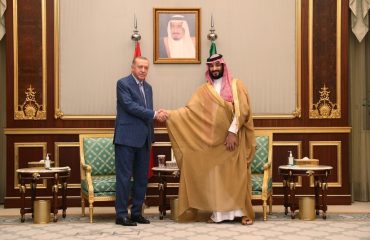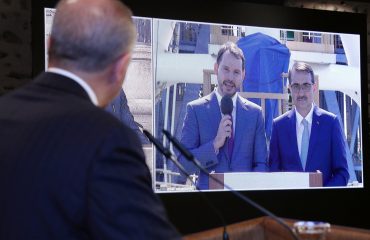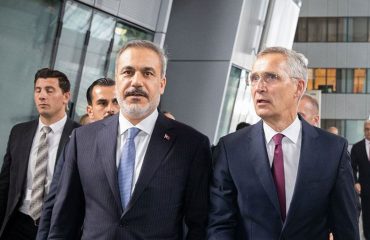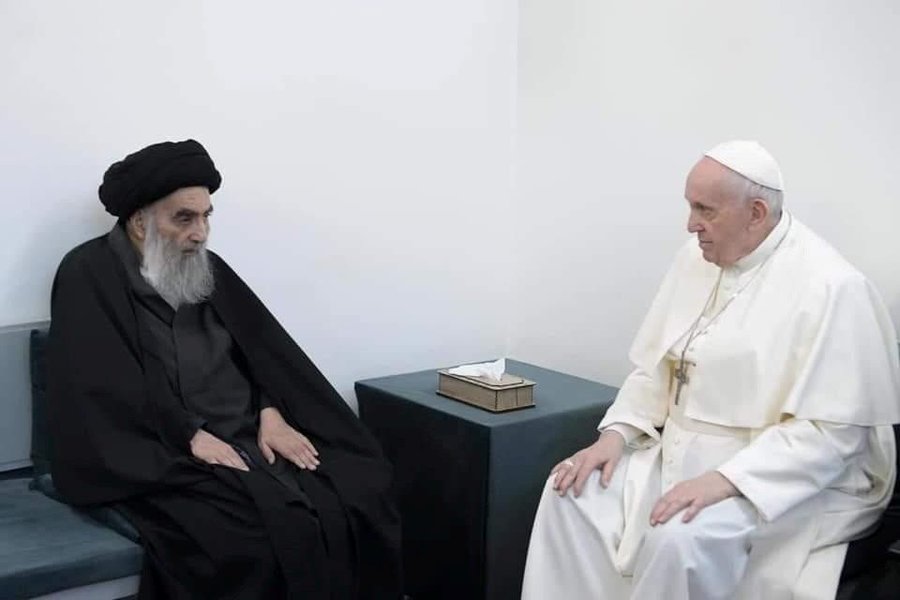

Pope Francis’ visit to Iraq on 5-8 March was important both historically and politically as its effects could extend over a long period.
This first visit by a Pope to Iraq came at a time when the waters in the Middle East were heating up again.
Some commentators argued that the pope also visited Arbil, and met with the Kurdistan Regional Government (KRG) officials in Arbil, the capital of the autonomous administration in Iraq, only to send a “Kurdistan message” to Turkey in this historic visit. One of the commemorative stamps printed in memory of the visit included a “Great Kurdistan” map that also covers part of Turkish soil, justifying such an argument.
However, if a political dimension of Pope’s visit is sought, then it should be about Iran.
Iran was among the countries that showed the most interest in this visit along with European countries with a high Catholic population, namely Italy and France.
Now that the Joe Biden administration signaled that it will not ease its stance on the Islamic Republic, the Iran issue also concerns Turkey.
As early as February 25, U.S. planes bombed the Al Bukamel checkpoint on the Syrian border with Iraq on Biden’s first military operation order. The Pentagon said the operation was in response to rocket attacks by pro-Iranian militias against a military base in Arbil on Feb. 15 and the U.S. Embassy in Baghdad two days later.
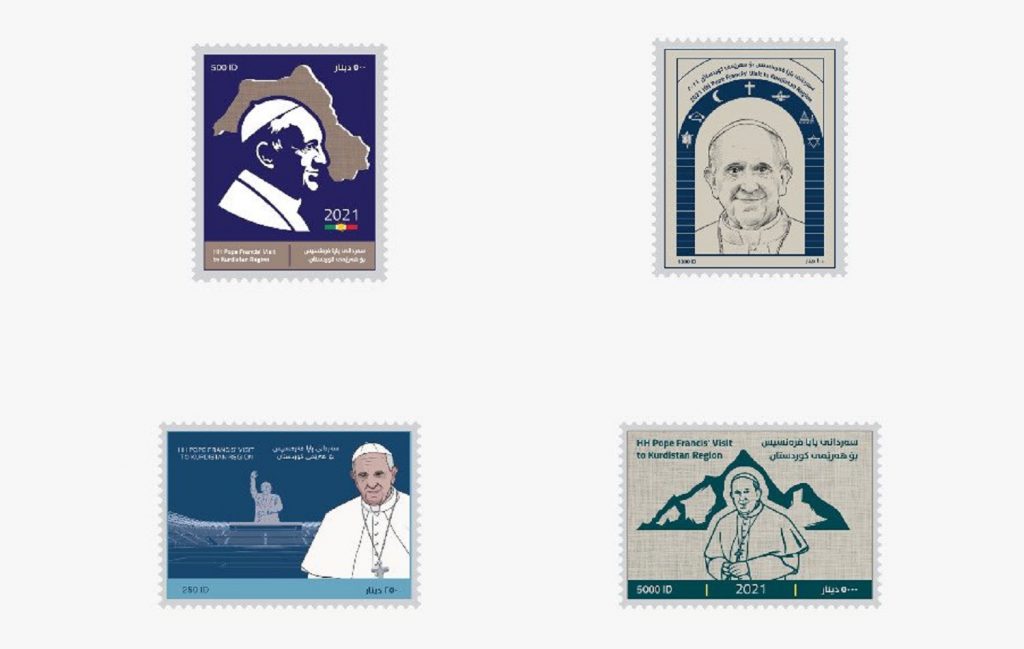
What did the pope do in Iraq?
But to avoid analyzing Pope Francis’ visit from one angel, Iran, let us start with his itinerary in Iraq.
The pope, who is also considered as the state leader of the Vatican, naturally started his visit by meeting with Iraqi President Barham Salih in Baghdad. He participated in a ceremony with representatives of all Abrahamic religions in Iraq in Ur, which is considered to be the birthplace of Prophet Abraham. In Arbil, he did not meet not only with KRG Prime Minister Nechirvan Barzani and clerics but also others including Abdullah Kurdi, the father of Aylan Kürdi, whose body was found washed ashore in Turkey’s Bodrum in 2015. He also went to Mosul. He performed a ceremony among the ruins of a cathedral that was destroyed by ISIL barbarism.
But perhaps his most important and striking contact, both politically and religiously, was his meeting with the Iraqi Shiite cleric Ayatollah Ali al-Sistani in the city of Najaf.
This meeting was on the first page of both Le Monde in France and Kayhan and Shargh in Iran the next day. The Iranian media named this meeting with exaggerated expressions such as the joint “victory” of “Shiism” (not Islam) and Christianity.
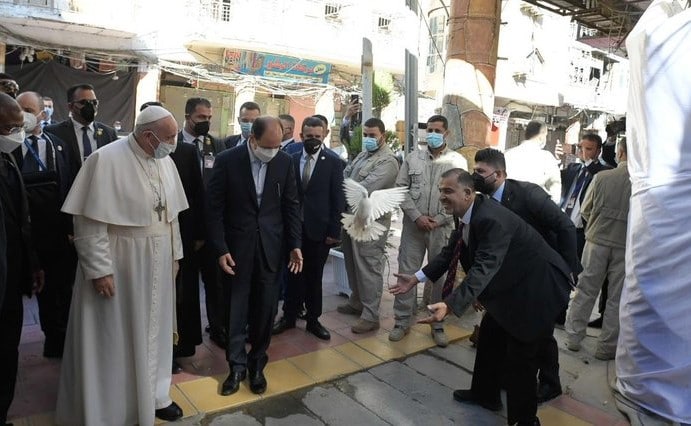
Iran and Iraqi Shiite rivalry
The Iranian media praised Pope Francis’ visit as the victory of Shi’ism and Christianity (not Catholicism, for example) was intended to remind us of the joint struggle against ISIL, the most extreme example of radical Sunnism, in Iraq. Thus, perhaps they were looking for common ground with the U.S. administration.
After ISIL occupied Mosul, the second-largest city in Iraq, in June 2014, all Shiite groups were united under one roof. This umbrella organization was the semi-official militia al-Ḥashd ash-Shaʿbī (Popular Mobilization Forces) established in 2013. However, the administration of al-Ḥashd ash-Shaʿbī soon shifted to Iran. Major General Qasem Suleymani, commander of the Jerusalem Force, the foreign operations unit of the Iranian Revolutionary Guards, held the grip.
The United States seemed indifferent to this organization until the ISIL threat shrank but after that, it went after Suleymani. Sulaymani and Abu Mahdi al-Muhandis, the number-two of the organization, were killed by U.S. planes at Baghdad airport on Jan. 3, 2020. Sistani left al-Ḥashd ash-Shaʿbī in March when Tehran disregarded his request to replace al-Muhandis with a figure close to him.
Sistâni as Khamenei’s biggest rival
In other words, both the U.S. and Sistâni are uncomfortable with the increasing Iranian influence in Iraq.
On the other hand, both the Iranian religious leader Ali Khamenei and the leader of Arab Shiism, Ali Sistâni, are two spiritual leaders who are the authority of “marji’ taqlīd”, which means that their behaviors are sought to see be followed, imitated. They are the two Ayatollah-al-ozmas, the great Ayatollahs.
Khamenei is trying to direct the Shiite world from Qom and Sistâni from Najaf.
But there is difference and competition between them. Iran is a religious state, where religious affairs and state affairs merge. A delegation of religious scholars headed by Khamenei, Wilāyat al-Faqīh (Guardianship of the Islamic Jurist), actually has more powers than the government.
However, Sistâni favors not mixing religion and state affairs. Not because he is secular, but because he is stricter than Khamenei in religious practice. Although they always seem to praise and be fond of each other, this is also a deception.
Qom and Najaf are two rival centers of Shia.
Pope Francis visiting Najaf and meeting with Sistani is actually a development that should not make Tehran happy, but concerned.
The Vatican is back on the Middle East scene, and this may not be for the benefit of Iran.
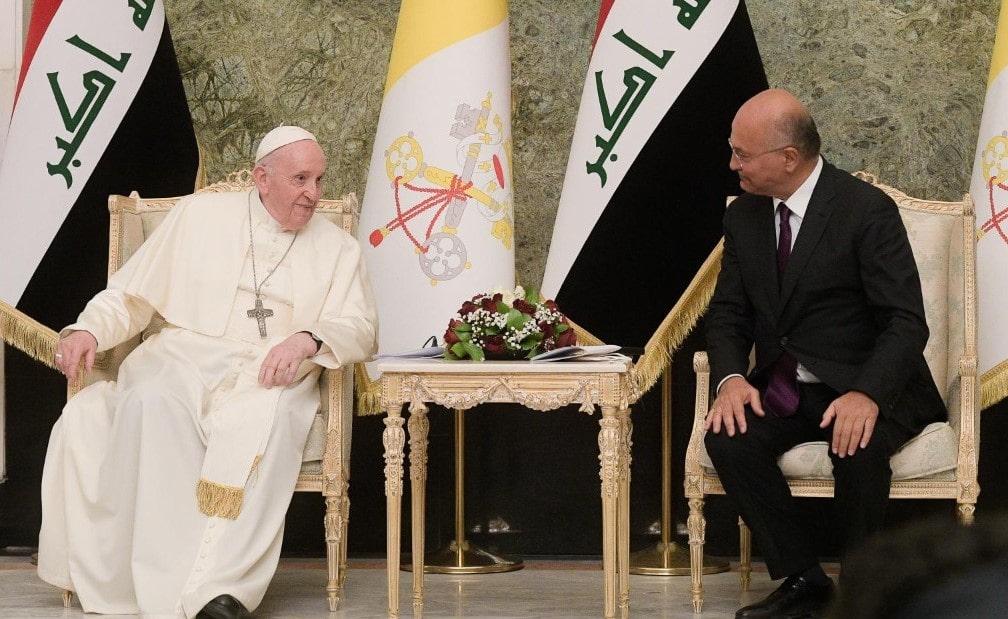
Return of the Vatican to the Middle East
Lütfullah Göktaş, the Turkish Ambassador to the Vatican, evaluates the Pope’s visit to Iraq as a “positive contribution to the stability of the region”. Because Turkey is also uncomfortable with the growing Iranian influence in Iraq and Syria.
Finally, Iranian Ambassador to Ankara Mohammad Farazmand was summoned by the Turkish Foreign Ministry on March 1 after his fellow Iranian Ambassador to Baghdad, Iraj Masjedi, condemned the anti-PKK operations of Turkey on Iraqi soil.
On the other hand, U.S. President Biden called Iraqi Prime Minister Mustafa Al-Kadhimi on Feb. 23, before the Pope’s visit, to discuss “the fight against terrorism and the sovereignty and territorial integrity of Iraq.”
It is possible to interpret this as “Do not worry, our intention is not to have Kurdistan or Shiistan established, our problem is with Iran.”
For Turkey, the issue is the struggle against the PKK both in Iraq and Syria. President Tayyip Erdoğan argues the PKK/YPG problem against the U.S. discomfort with Ankara’s purchase of Russian S-400 missiles.
The Israeli lobby, which is influential in the Biden administration, does not want the U.S. to loosen the fight with Iran. Biden agrees. On the other hand, it is also clear that an alternative to the current Iranian administration can emerge only from the Shiite majority.
So it is mind-opening to interpret Pope Francis’ visit to Iraq from that perspective.
